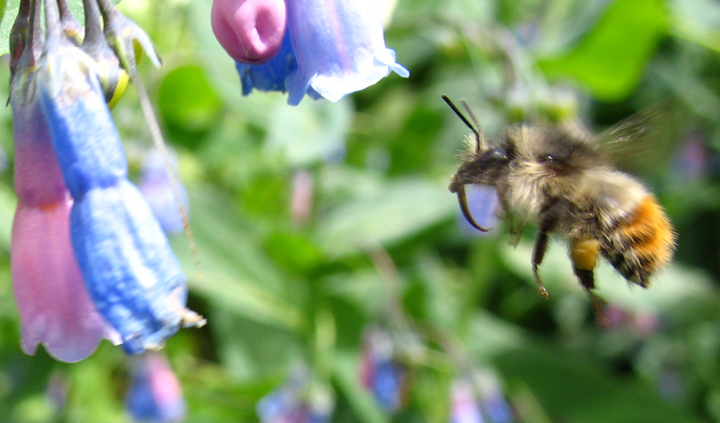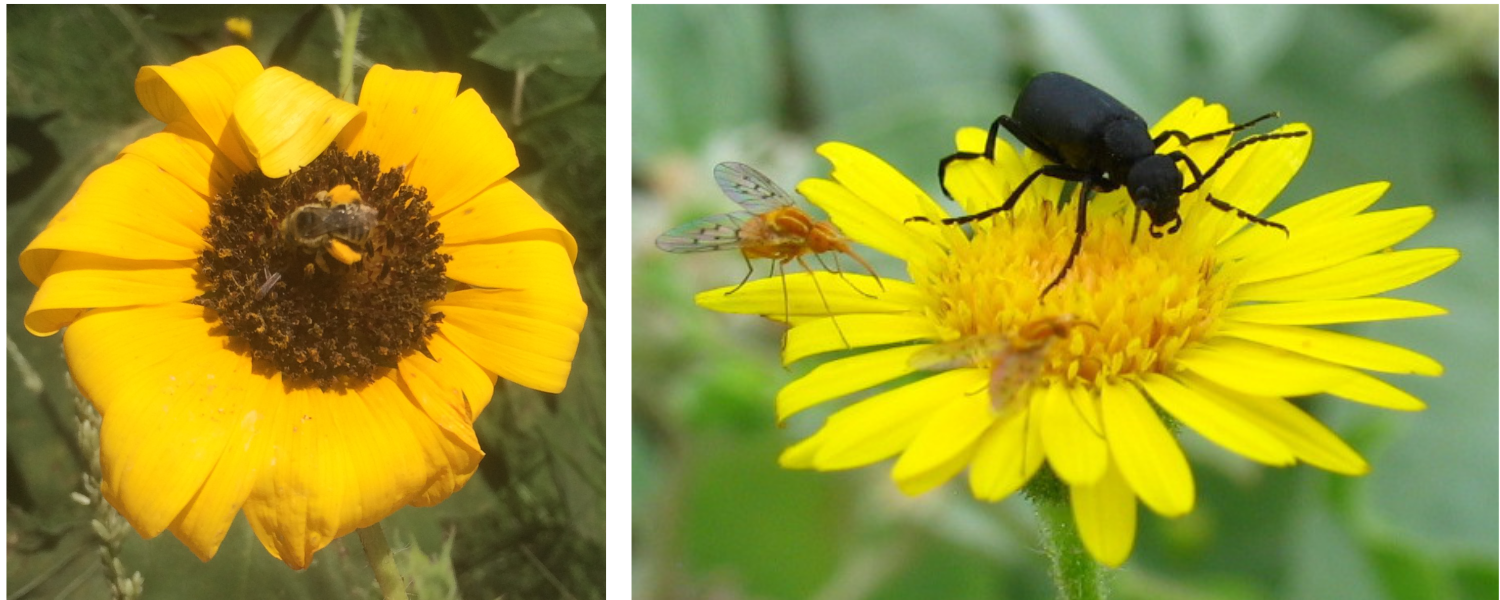Lab research falls under two main topics: insect foraging, and insect biodiversity under global change. This and this articles give a brief overview.
Current projects include:
- How do grazing practices impact pollinators and the resources that support them? This project is in collaboration with working ranches near UNT, including The Dixon Water Foundation.
- What other flower visitors do bees use as sources of social information, and does this information use among types of flower visitor?
Past projects include:
- Native grassland restoration for pollinators
- Bumble bee nectar robbing decisions
Insect foraging
Deciding what, where and how to feed provides many challenges in complex natural environments. Active foragers, including many pollinators and predatory insects, locate and determine the identity of the most profitable food types using information from the environment. For example, bees can learn about flowers by attempting to feed from them, but also by observing other bees foraging. Our research in this area currently focuses mainly on bees. It attempts to determine what bees use as information when feeding, how they respond to different types of information, how such foraging decisions affect pollination, and how human activities alter bee foraging.
Representative publications:
- Lichtenberg EM, Irwin RE and Bronstein JB. 2018. Bee-flower interactions alter bees' motivations to cheat vs. cooperate in a pollination mutualism. Ecology 99: 1815-1824
- Lichtenberg EM, Graff Zivin J, Hrncir M and Nieh JC. 2014. Eavesdropping selects for conspicuous signals. Current Biology 24: R598-R599
Insect biodiversity
Habitat loss and agricultural intensification degrade biological communities, thereby altering biodiversity, interactions within those communities, and ecosystem services and functions. Land management practices such as diversified farming and grassland restoration, on the other hand, seek to restore highly functional communities. We are interested in how both habitat loss and land management alter communities of flower-visiting insects. Our research is investigating how specific practices (e.g., setting aside land for insect habitat, prescribed burns) alter biodiversity of insects with different life histories, and how this changes ecosystem service provisioning.
Representative publications:
- Lichtenberg EM, Mendenhall CM and Brosi BJ. 2017. Stingless bee species' traits alter responses to deforestation. Journal of Animal Ecology 86: 1404-1416
- Lichtenberg EM, Kennedy CK, Kremen C, [60 additional authors] and Crowder DC. 2017. A global synthesis of the effects of diversified farming systems on arthropod diversity at field and landscape scales. Global Change Biology 23: 4946-4957